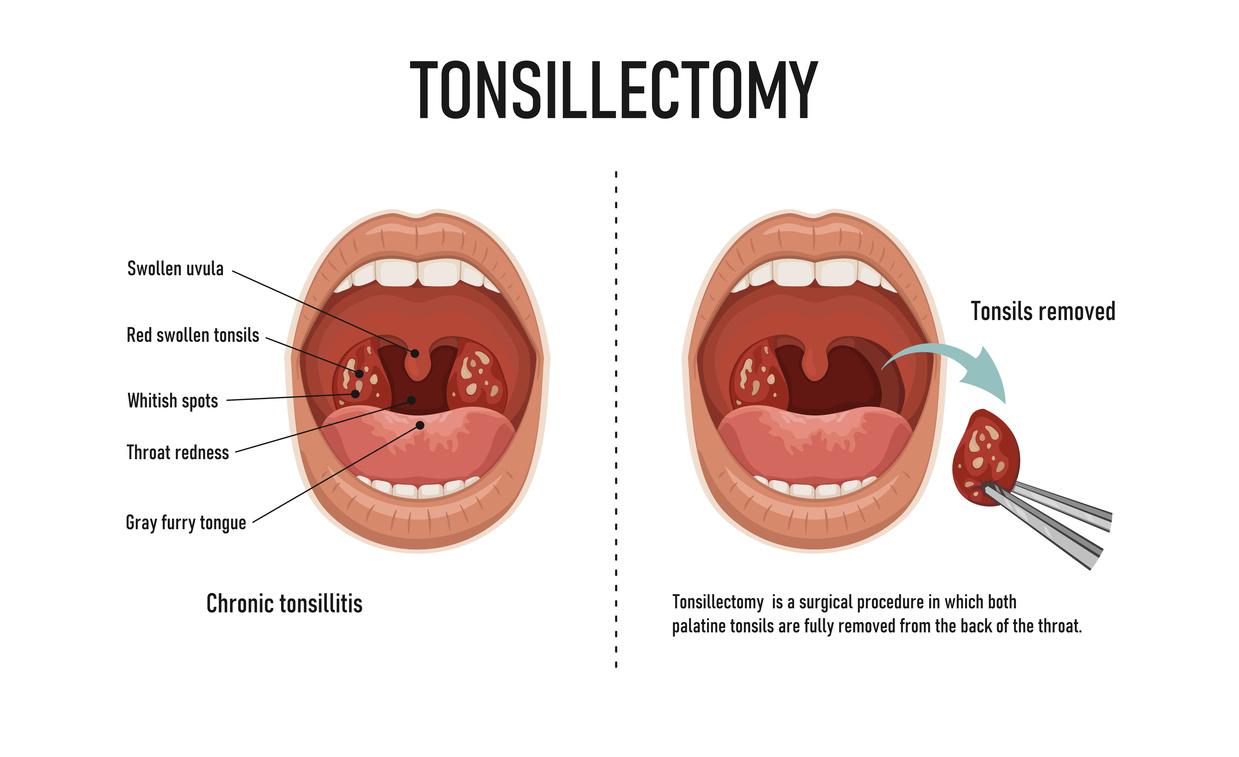Understanding Coblation Tonsillectomy: A Minimally Invasive Surgical Procedure
Understanding the Benefits, Procedure, and Potential Risks
Introduction: Coblation tonsillectomy is an advanced surgical technique used to remove the tonsils, which are two oval-shaped lymphoid tissues located on each side of the throat. This procedure offers several advantages over traditional tonsillectomy methods, making it a preferred option for many patients. In this article, we will delve into the details of Coblation tonsillectomy, including its benefits, procedure, and potential risks.  Benefits of Coblation Tonsillectomy:
Benefits of Coblation Tonsillectomy:
Coblation tonsillectomy is considered a minimally invasive procedure, meaning it involves less tissue trauma, pain, and recovery time compared to traditional surgical techniques. The key benefits of Coblation tonsillectomy include:
Reduced post-operative pain: Unlike conventional methods that use heat or laser energy, Coblation relies on controlled radiofrequency energy. This results in less damage to surrounding tissues and significantly reduces post-operative pain.
Faster recovery: Due to its minimally invasive nature, patients undergoing Coblation tonsillectomy often experience a faster recovery period. This means fewer days off work or school and a quicker return to regular activities.
Minimal bleeding: Coblation technology operates at lower temperatures, minimizing the risk of excessive bleeding during and after the procedure. This makes Coblation tonsillectomy particularly suitable for patients with bleeding disorders or those prone to bleeding complications.
Procedure Details: During Coblation tonsillectomy, the surgeon uses a specialized device that combines radiofrequency energy and saline solution. The procedure typically follows these steps:
Anesthesia: The patient is given general anesthesia to ensure they are unconscious and pain-free throughout the surgery.
Insertion of the Coblation device: The surgeon inserts the Coblation device into the mouth, positioning it near the tonsils.
Tissue removal: The Coblation device delivers radiofrequency energy to the tonsil tissue, causing the ionic particles in the saline solution to dissolve the tissue. The dissolved tissue is then gently suctioned out.
Hemostasis: The Coblation technology simultaneously helps control bleeding during the procedure, reducing the need for additional cauterization.
Closure: Once the tonsils have been completely removed, any remaining bleeding is controlled, and the surgical site is carefully inspected for potential complications.
Potential Risks: Although Coblation tonsillectomy is generally considered safe, as with any surgical procedure, there are potential risks involved. Some of the risks associated with Coblation tonsillectomy include:
Bleeding: While Coblation tonsillectomy reduces the risk of bleeding, there is still a possibility of bleeding during or after the surgery. In rare cases, additional interventions may be required to control bleeding.
Infection: Any surgical procedure carries a risk of infection. Patients should follow the surgeon's instructions regarding post-operative care, including proper oral hygiene and the use of prescribed antibiotics if necessary.
Pain and discomfort: While Coblation tonsillectomy is known for reducing post-operative pain, some patients may still experience varying levels of discomfort during the recovery period. Pain management strategies will be discussed by the medical team.
Potential for airway complications: In rare cases, there may be temporary swelling or narrowing of the airway after the procedure, which can cause breathing difficulties. It is essential to report any concerns to the medical team promptly.
In conclusion, Coblation tonsillectomy is a modern surgical technique that offers numerous benefits over traditional tonsillectomy methods. With reduced post-operative pain, faster recovery, and minimal bleeding, it has become a preferred choice for many patients. However, potential risks exist, and patients should discuss these with their healthcare provider to make an informed decision.
We are associated with experienced and highly skilled medical professionals. We use the latest medical technology available in the world and we provide medical services in collaboration with JCI & NABH Certified hospitals only. Our services include various types of treatment and organ restructuring and transplant.
